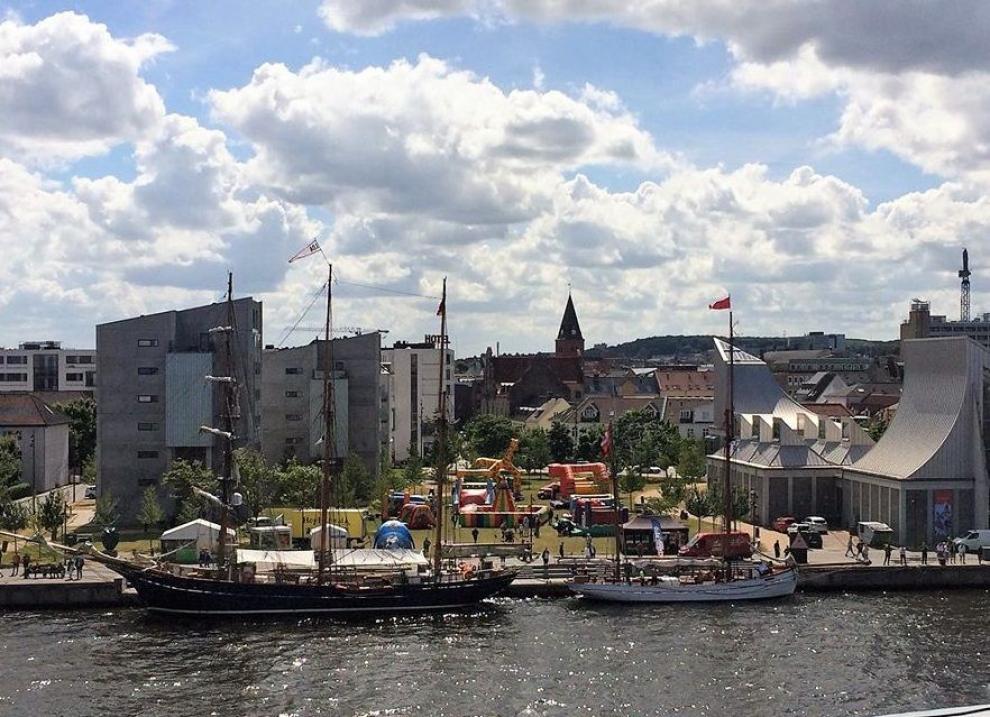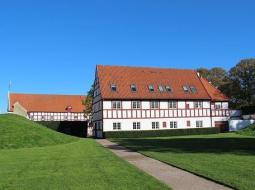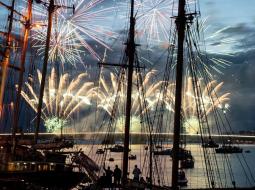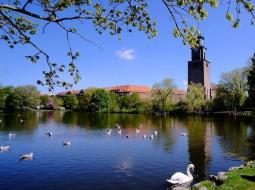Thessaloniki gets ready for its metro launch in November
The underground rapid transit lines have been under construction for almost two decades due to various project delays
 TheMayor.EU logo
TheMayor.EU logo 
The earliest recorded trading privileges of Aalborg date back to 1342 when King Valdemar IV received the town as part of his huge dowry for marrying Helvig of Schleswig. The town prospered and become one of the largest communities in Denmark. Its growth sped up in 1481 when the merchant and trade association Guds Legems Laug was established.
During the Middle Ages, many important institutions were established in Aalborg, including Budolfi Cathedral and the Hospital of the Holy Ghost, a monastery and nunnery to help people in need. It was transformed into a hospital during the Reformation and still exists today as a nursing home for the elderly.
In 1530 a large part of the town was destroyed by fire, and at the end of 1534, it was stormed and plundered by the king's troops after a peasants' revolt. The Reformation in 1536 brought about the demolition of the town's two monasteries. As a result of these events, the town became a Lutheran bishopric in 1554.
During the period 1550-1640, as a result of increased foreign trade, Aalborg enjoyed great prosperity. The population grew in parallel with the development of numerous buildings in the city. In 1663, Aalborg suffered yet another serious fire, which destroyed the tower of Budolfi Church.
During the second half of the XVIII century, Aalborg entered a further period of prosperity with its population rapidly growing from 4,160 in 1769 to 5,579 in 1801.
In 1814 Denmark ceded Norway to Sweden and Aalborg lost its important role as the country's centre for Norwegian trade. In the mid-19th-century, Aalborg was overtaken by Aarhus as the biggest city in Jutland. By the end of the 19th century, there was however an upturn. The pontoon bridge over Limfjord was completed in 1865, and after four years, the railway reached the city. The harbour itself was also improving, eventually becoming Aalborg Denmark's second largest port. Aalborg became the main producer of tobacco products and spirits in Denmark. In 1901, the population had increased to almost 31,500.
Around the beginning of the XX century, as a result of decisions taken by the municipality, many of the half-timber houses in Aalborg were torn down. They were in turn replaced by hundreds of modern buildings, which completely transformed the look of the city.
By 1960, Aalborg had become famous as the "city of smoking chimneys", with half of the inhabitants working in industry or manufacturing. In 1970 the population had grown to around 97,000.
In the 1970s, Aalborg's industry entered into a period of decline, which in turn led to a drop in the city's population around 1990, when it began to increase again. By the year 2000, the service and education sectors accounted for about 60% of the workforce, partly as a result of the founding of Aalborg University in 1974.
The Municipality of Aalborg is the third biggest one in Denmark, right behind Copenhagen and Aarhus. In terms of population, Aalborg is the fourth largest city in Denmark with 139,016 citizens.
Aalborg is located 118 kilometres north of Aarhus and 64 kilometres southwest of Frederikshavn.
Aalborg is currently undergoing a major transition - transforming from an industrial hotspot into a smart and science-based community. It is a major exporter of grain, cement and spirits. Among its best-developed industries are Siemens Wind Power, Aalborg Industries and Aalborg Portland. All of these companies have turned into global producers of wind turbines.

It is a half-timbered building with red-painted woodwork and whitewashed wall panels. It was built by King Christian III in the mid-16th century to serve his vassals who collected taxes and is the only remaining example of its kind in the country. The castle's outskirts are open to the public -its park, dungeon and others, but the castle itself is off-limits due to the fact that it was converted into administrative office space during the 50s.

Aalborg boasts many theatres, symphony orchestra, opera company, performance halls, and museums which makes it into an important cultural hub. The Aalborg Carnival, held every year at the end of May, is one of the largest festivals in Scandinavia, attracting some 100,000 people annually.

The 6.5 hectares Østre Anlæg is one of the oldest in Aalborg, visited by up to 175,000 people annually. It was used as a dump during the 20s before being cleaned up and turned into a recreational area in the 1930s and 1940s. Within one can find a lake, many species of trees and flowers - all overlooked by St. Mark's Church on the eastern side. One can also observe a total of 51 different species of birds in the park.
Address: Boulevarden 13, DK-9000 Aalborg